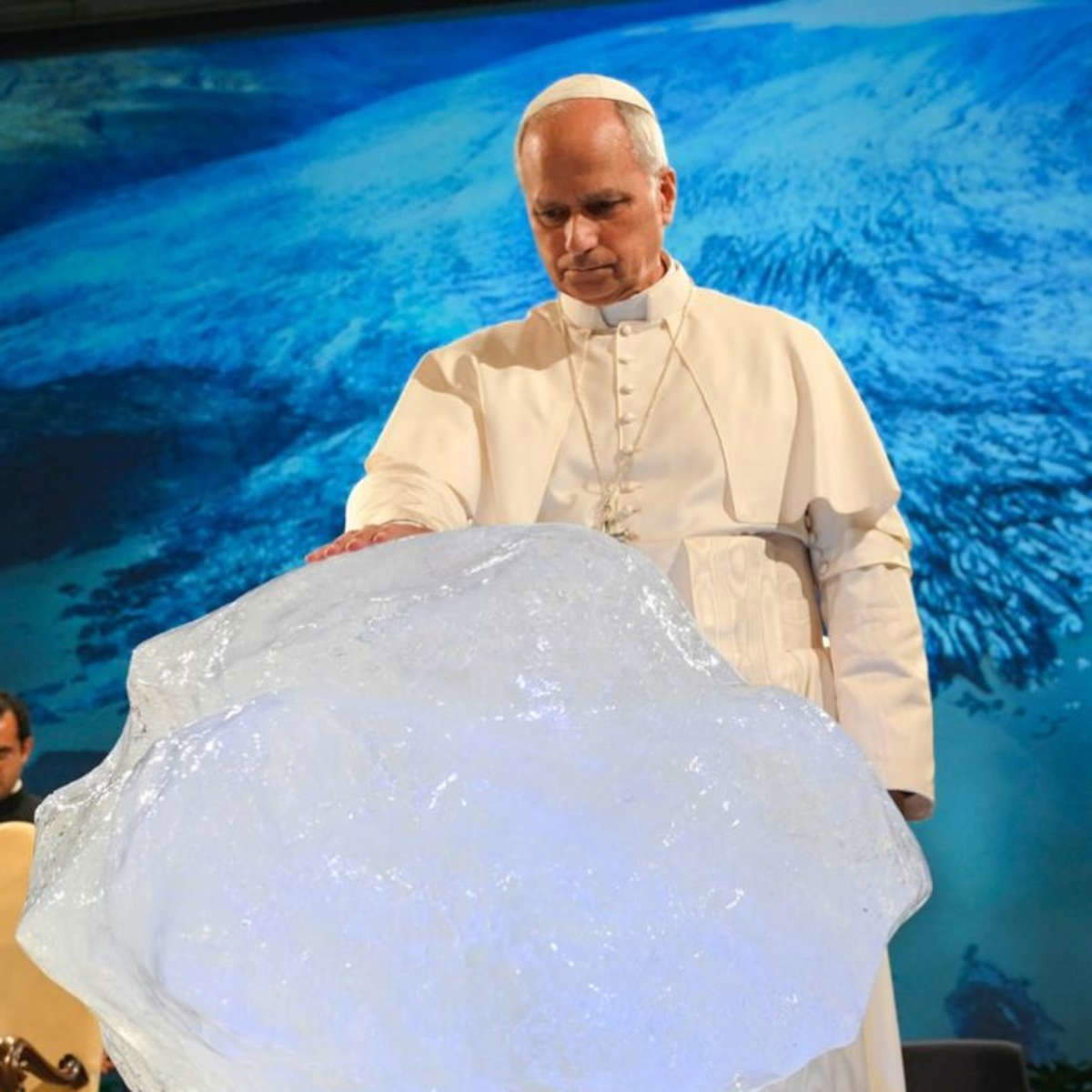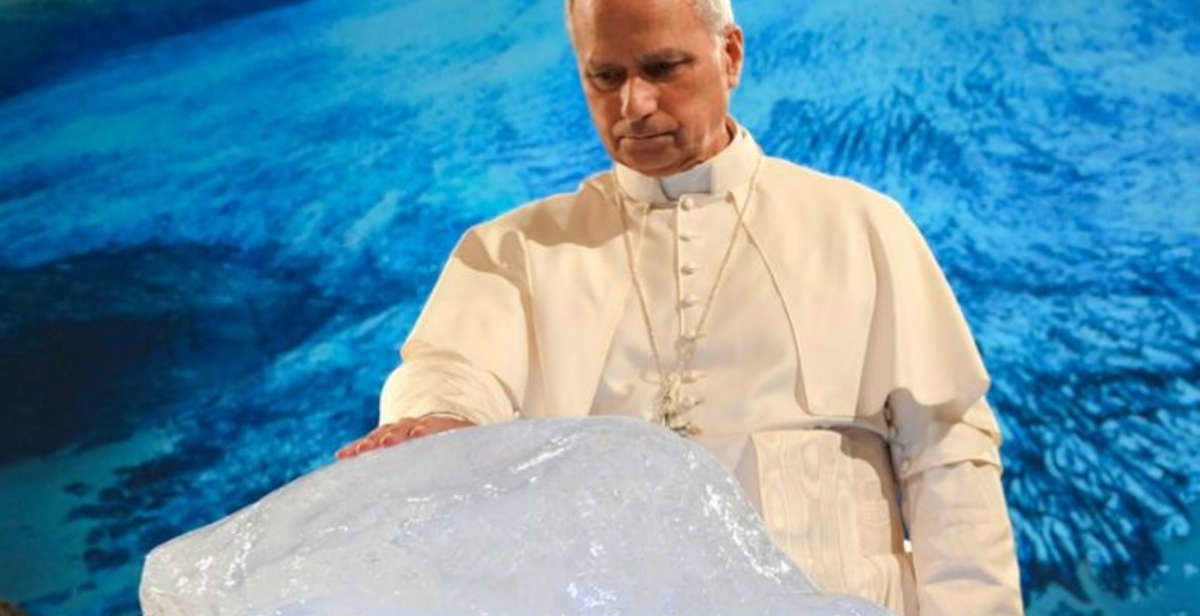During the Raising Hope Conference, an ecology conference underway this week in Rome, a gesture as symbolic as it was powerful caught the attention of attendees: Pope Leo XIV blessed a block of ice from Greenland, dating back some 20,000 years and brought to Rome by artist Olafur Eliasson. The action took place on the conference stage, where the ice cap fragment was placed next to the pontiff, a tangible testimony to the fragility of the planet in the face of advancing climate change.
The Raising Hope Conference brought together religious leaders, representatives of local and indigenous communities, scientists and policy makers ahead of the United Nations Climate Change Conference - COP30, to be held in Brazil in November 2025. In this context, the symbolism of ice was received with particular intensity, making visible the connection between climate dynamics and the spiritual and collective experience of humanity.
The blessed ice, brought to Rome by artist Olafur Eliasson with the support of geologist and friend Minik Rosing, was collected in the Nuup Kangerlua fjord in Greenland. It is a fragment naturally detached from the ice sheet and destined to melt into the ocean, like millions of tons of other ice throughout the Arctic region. The journey of this block, from the Arctic tundra to the international spotlight of the Italian capital, was a bridge between science, art and spirituality, calling out the urgency of collectively addressing the consequences of the climate crisis.

The significance of the presence of Greenlandic ice is not only symbolic. As highlighted during the event, the Greenland ice sheet represents one of the most important elements in the climate regulation of the planet. Consisting of layers of compressed snow that have accumulated over tens of thousands of years, the ice sheet contains ancient air bubbles within it that can provide crucial data on the composition of Earth’s atmosphere in ancient times. According to the most recent estimates from NASA’s Climate Monitoring Center, Greenland lost about 270 billion tons of ice from 2002 to 2023, with serious consequences for sea level rise and global temperature balance.
The blessed block on stage at the Raising Hope Conference made visible the idea that the environment is not a separate entity from humans, but an interconnected reality, as expressed by the concept of the “more-than-human world,” a term coined by philosopher David Abram to describe a vital community that includes humans, animals, plants, natural elements and ecological processes. Recognizing this dimension means admitting that the needs of other species must be put on an equal footing with human needs, in an ethic that goes beyond anthropocentrism.
The ice block is part of a larger project by artist Olafur Eliasson, who for years has been engaged in popularizing environmental issues through art. With geologist Minik Rosing, Eliasson created Ice Watch, a series of installations that brought large blocks of Greenlandic ice into public spaces in major European cities, from Copenhagen to London via Paris. The goal is to make the physical reality of the ongoing crisis perceptible and concrete, especially for an urban audience often distant from the most obvious manifestations of climate change.
 |
| Pope Leo XIV blesses block of ice brought to Rome by Olafur Eliasson |
Warning: the translation into English of the original Italian article was created using automatic tools. We undertake to review all articles, but we do not guarantee the total absence of inaccuracies in the translation due to the program. You can find the original by clicking on the ITA button. If you find any mistake,please contact us.